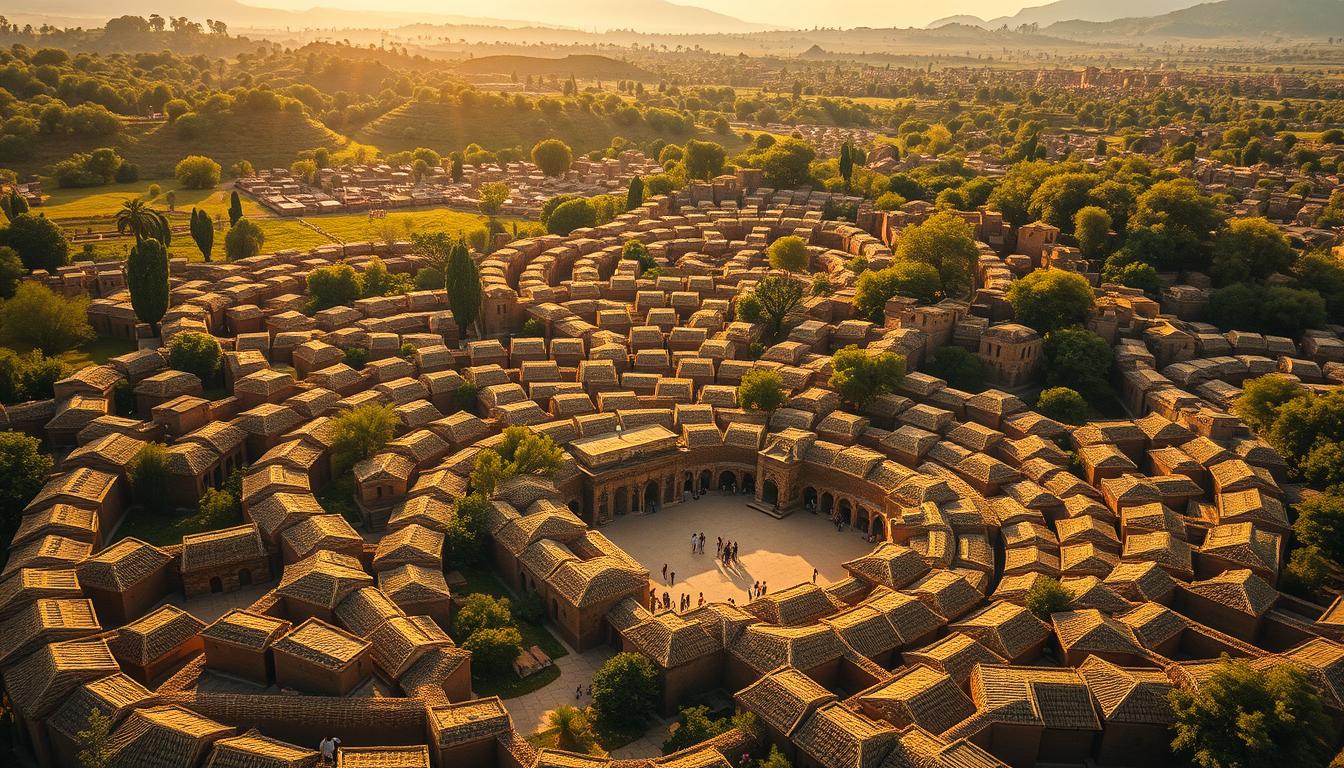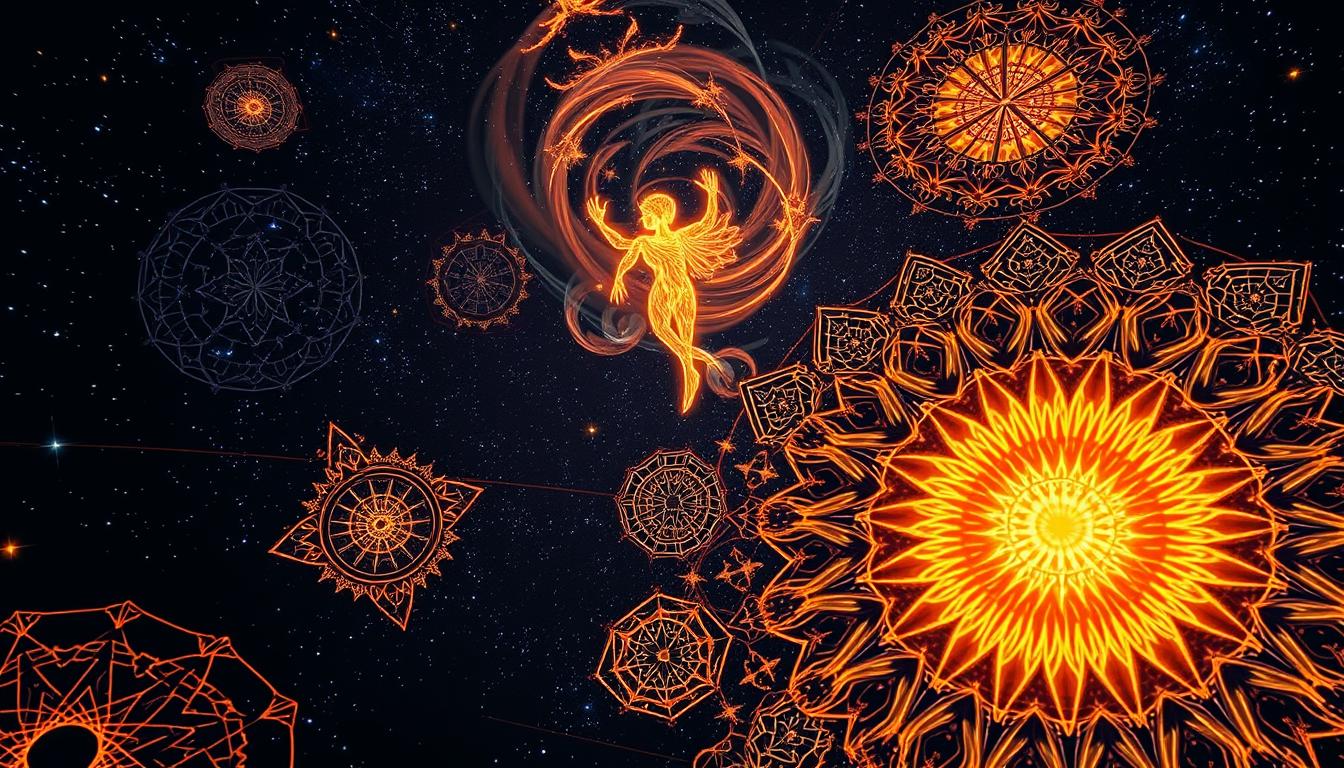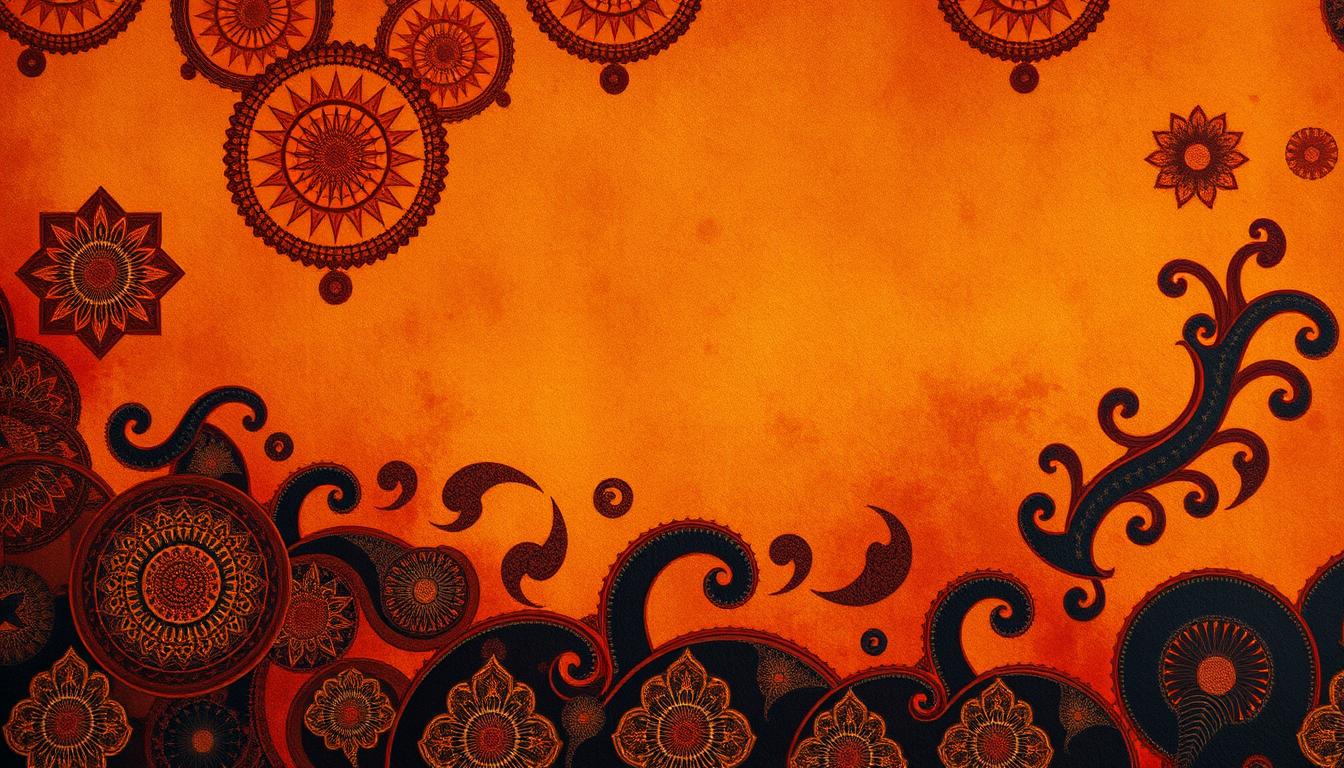Fractal patterns are complex designs that repeat themselves in nature. They are not just key in art and math but also in indigenous healing. These geometric shapes are used in wellness practices by various cultures. This helps in healing by connecting with nature’s patterns.
By looking at and using these patterns, people find mental health benefits. It shows a deep link between nature’s beauty and the traditions of indigenous peoples. This mix promotes well-being.
Understanding Fractal Patterns
Fractals are a fascinating topic in math and nature. They grab your attention with their complex designs. They are geometrical shapes that repeat patterns at different sizes. This makes us see the beauty in the world in a new way.
Definition and Characteristics of Fractals
Fractals are special because their patterns look the same up close or far away. This self-similarity makes them stand out. We see these patterns in many things around us. They show beautiful and intricate designs that we like.
Examples of Fractal Patterns in Nature

Nature is full of fractals. Some examples are tree branches, leaves, and coastlines. These patterns show nature’s beauty and how everything is connected. When we see these patterns, they make the natural world feel closer to us.
The Connection Between Fractals and Nature
Fractals have a special power that helps us feel calm, especially in nature. We see complex patterns in leaves, mountains, and rivers that connect with us deeply. This makes us feel relaxed. That’s why being in nature is so good for our mental health.
How Fractals Create a Sense of Calm
Fractals bring visual peace that calms our minds. When we see these patterns, we connect better with our surroundings. This lessens our anxiety. The beauty and repetition in fractals make us think and reflect, leading to peace inside us.
Scientific Studies on Fractals and Stress Reduction
Research, like from the University of Oregon, shows that fractals in nature lower stress. In experiments, people spotted fractal patterns very fast, in just 50 milliseconds. This quick spotting is linked to a big drop in stress and tiredness after being in nature. This proves fractals really help with mental health.
The Role of Fractals in Indigenous Cultures
Fractal patterns tell a deep story in different indigenous cultures. They show how life and nature are connected. These designs have a long history and show the knowledge and spirit of native people.
Historical Significance of Fractal Patterns
Fractals are key in the art and culture of indigenous people. They are not just beautiful. They also show heritage. These patterns talk about rebirth, harmony, and life’s cycles. They link old wisdom to the natural world.
Fractals in Indigenous Art and Spiritual Practices
Native art is filled with fractal designs, each with a special meaning. You can see these patterns in textiles, carvings, or paintings. They have deep spiritual meaning.
These designs show how indigenous people see the world. They tell about their bond with nature and the universe. Fractals help us understand ourselves and our group identity in a spiritual way.
The Therapeutic Benefits of Fractal Patterns in Indigenous Healing Practices
Fractal patterns are not just pretty. They are crucial in indigenous healing. These patterns offer therapeutic benefits in different healing methods. By using them, people feel closer to nature and more mindful.
How Fractals are Integrated into Healing Methods
Indigenous cultures use fractals in art, buildings, and nature to boost healing. These patterns make spiritual rituals more engaging. They also enhance mental and emotional wellness, key in traditional healing.
Evidence Supporting Healing Benefits
Research shows that fractals can help people heal faster. For example, seeing natural fractals, like trees, speeds up healing. This evidence proves the healing power of fractals in both old and new practices.
Fractal Patterns in Healing Environments
Fractal patterns are a key part for improving well-being in cities and nature. These complex patterns catch our eye and bring peace. This is vital in our fast-paced lives. Adding fractals in places we live can make cities into spaces that help us relax and think clearly.
Fractals in Urban and Natural Landscapes
In cities, concrete and metal can make us feel uneasy. Fractals can change that by softening these hard edges. Places like parks and buildings with fractal touches can be a break from city noise.
Nature is full of fractals, from tree branches to mountains. They make everything look better and help us connect with our surroundings. By using these patterns in cities, we can feel at home, no matter where we are.
The Impact of Fractal Environments on Wellbeing
Research shows fractals help with mental health. Being around fractal designs can make us feel less stressed and happier. Spaces that use fractals can heal us, making them perfect for places like hospitals and quiet spots.
By using fractal design, we can make better healing places. This helps us mentally and emotionally. It creates a calming space in cities and connects us to the beauty of nature.
Psychological Effects of Viewing Fractals
Looking at fractal patterns has deep mental effects. Studies show these complex designs make us feel more relaxed and less anxious. Fractals combine beauty with nature, making us feel fully absorbed in the experience. This can greatly improve our mental health.
Cognitive and Emotional Responses to Fractals
Fractals do more than please the eye. Research finds that fractals calm us down and bring clarity. People feel less stressed when they see fractal patterns. This happens because fractals remind us of nature’s beauty. It’s why they’re so helpful in therapy.
Fractals and Attention Restoration Theory
Attention Restoration Theory says nature helps focus our minds. Fractals, which are part of nature, help us think clearer and concentrate better. They offer a varied yet orderly visual experience. This helps us stay focused on tasks, improving our thinking.
Modern Applications of Fractal Patterns in Healing
Fractal patterns are now used in many places, like hospitals, schools, and offices. They are meant to help people relax and feel better. By adding fractal shapes into buildings, these places help improve mental and emotional health.
Fractal Designs in Therapeutic Spaces
Fractal designs are seen in walls, floors, and gardens of healing spaces. They bring a natural calmness, reducing stress. Some examples include:
- Flooring with complex fractal patterns, offering unique sensory experiences.
- Wall decor mirroring natural fractals, giving comfort in hospitals.
- Gardens using fractal shapes, making people feel closer to nature.
Case Studies Demonstrating Effective Use
Many studies show the success of fractal designs in different places. The Relaxing Floors project in healthcare settings helps patients recover better. This project has shown real benefits for people’s mental health. Likewise, schools using fractal designs see students with more focus and creativity.
Cultural Significance of Fractals in Indigenous Healing
Fractals are deeply meaningful in indigenous healing. They link personal and group wellness. These patterns show how all life is connected. This knowledge is crucial for helping both individuals and communities.
They are not just tools for healing. They also bring people together. They help us understand and care for our world better.
Connecting Personal and Collective Healing through Fractals
Using fractals in healing highlights the need for group healing in indigenous cultures. People feel stronger knowing they are part of a larger community. This fosters shared healing experiences.
Seeing health as a shared journey boosts everyone. It shows that helping one person can help the whole community.
Fractals as Symbols of Nature’s Wisdom
Fractals represent the smart ways of nature. They remind us of the complex patterns around us. Indigenous healing practices use these symbols to stress the importance of ecological balance.
Fractals carry lessons from the past. They teach us to live in harmony with nature. This is crucial for our future health.
Challenges and Limitations
Studying fractals’ role in healing reveals tough challenges. Especially when looking at indigenous methods through today’s science lens. Misunderstandings often occur, making it hard to mix old and new cultures smoothly.
Contemporary Misunderstandings of Indigenous Practices
Sometimes, people use indigenous practices without fully getting their meaning. This can weaken the true value of those traditions. Recognizing the depth of these practices is key to truly appreciating them.
Balancing Tradition with Modern Science
Blending indigenous ways with modern science is delicate. It’s about respecting ancient wisdom while embracing new discoveries. This mix can bring a more complete understanding of healing, respecting both past and present.
Future Research Directions
Future studies may find new ways to use fractals in healing. This could help us better understand their impact on health. It might also show how bringing in indigenous knowledge can make research more complete.
Exploring New Paradigms in Fractal Healing Studies
Recently, there’s been a shift towards using fractal patterns in healing. Research may soon explore how these designs help in healing both the mind and body. This could change how we approach health care for different people.
Integrating Indigenous Knowledge with Scientific Research
Working with indigenous wisdom can teach us a lot about healing. Future work should involve indigenous groups more. This could lead to new ways of healing that respect old traditions and use scientific methods.
Conclusion
Exploring fractal patterns shows how nature links to indigenous healing. Delving into these designs, we see their deep effect on well-being. Fractals mirror nature’s rhythm, reminding us of our connection to all living things.
Learning about fractal benefits shows the importance of combining old knowledge with modern wellness. This mix of art and nature boosts healing methods and views health in a fuller way. By noting nature’s patterns, we help healing and strength grow.
In closing, studying fractals and indigenous healing opens new research paths. It helps us value the wisdom in nature and old teachings. This leads to new healing ways that respect our bond with the earth.



